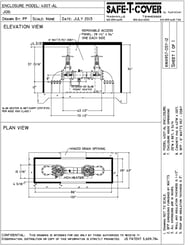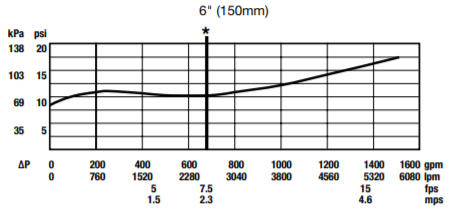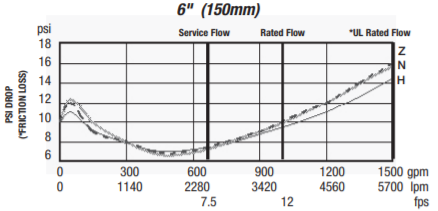It's time to switch from the Watts 909 to a 957 assembly. A few times each month, we receive a civil drawing and are asked to size and quote an enclosure to fit the Watts 909 reduced pressure zone (RPZ) backflow assembly. This assembly is well known in the industry, as it was introduced more than 30 years ago and is proven to get the job done. If a different Watts model was available that accomplished the same design intent and could save your client some money, would you start specifying it? You're about to learn more about the Watts 957, which has actually been on the market since 2002.
You'll Save Money
The upfront cost for the 909 is higher than the 957. The 957 is a newer design, has a shorter lay length and weighs less. The 909 and the 957 are both USC-approved backflow assemblies and have an outstanding track record in the field. Specifying a 957 will accomplish the same design intent and save your client money. We checked the pricing on a few supply websites. Below is a price comparison chart. You'll see the same pattern we did.
| Assembly Type | Supplyhouse.com - 4" | Supplyhouse.com - 6" | backflowpartsusa.com - 8" | shopbackflow.com - 10" |
| Watts 909 | $2639.95 | $4049.95 | $8525.08 | $16816.39 |
| Watts 957 | $1699.95 | $2897.95 | $6775.75 | $8097.99 |
In addition to saving money up front, you'll save it long term. Backflow assemblies are tested each year to be sure they are doing their primary job, which is to prevent backflow. As the backflow tester finds the assembly needing repair, the repair parts will cost more for the 909.
 You'll Save Space
You'll Save Space
The footprint of the 909 is longer than the 957. Whether it's installed inside the building or outside in an RPZ enclosure, the 909 takes up more room. The lay length of the 6” 909 is 66” long and the lay length for the 6” 957 is 43 ½”. When you install them inside, the assembly takes up expensive floor space. For a breakdown of just how much money an indoor RPZ can cost, check out this blog. Unfortunately, you'll run into a similar problem if you install a 909 outside in an RPZ enclosure. The enclosure must be significantly larger. We looked up the backflow enclosure requirements using our handy sizing guide and found the 6” 909 fits in model 600-AL. The contractor pricing for the 600-AL is $4,546. The 6” 957 fits in model 400T-AL with contractor pricing of $3,939. Once again, you're saving money - just over $600 - and you'll also save space. The smaller your enclosure is, the easier it is to make it aesthetically pleasing as well. Click the image to the right to see the 400T-AL enclosure with backflow assembly standard detail larger.
You'll Save Pressure
The pressure drop across the 957 is typically less than the pressure drop across the 909. The difference is small, but in some areas the smallest improvement in pressure can be precious. The pressure loss versus flow rate curve of a 6" 957 and 909 are below to illustrate this point.
909 |
957 |
 |
 |
Time for an Assembly Update
We're unsure why the 909 still shows up on so many design plans. The Watts 957 offers the same design intent as the Watts 909. By specifying the 957, the backflow assembly will be smaller, weigh significantly less, and even save your customer a few thousand dollars on the upfront cost. You'll save again if the assembly is to be installed outside in an enclosure because you'll get to use a smaller one of those as well. Then, enjoy the continued savings on maintenance and repairs. It's a no brainer: On your next project, think about the 957 instead of the 909.




